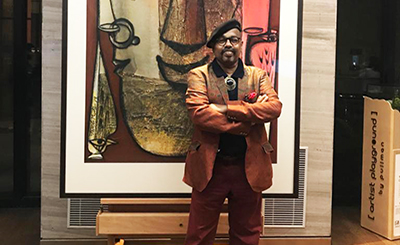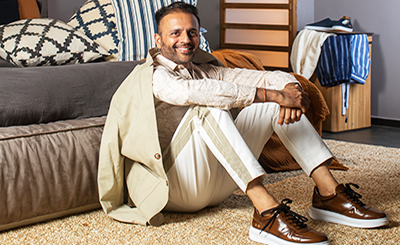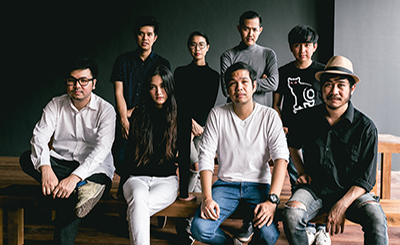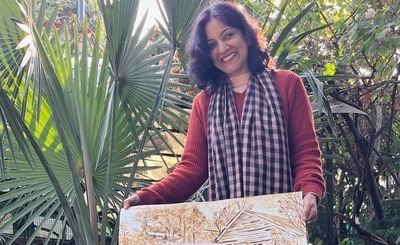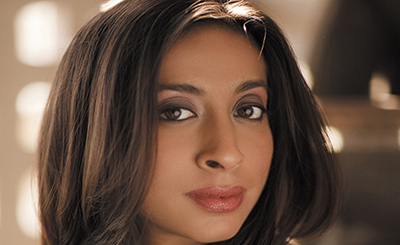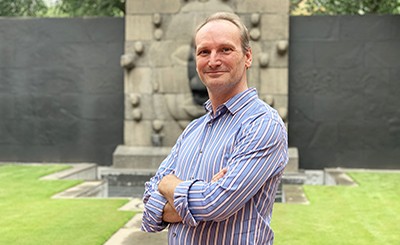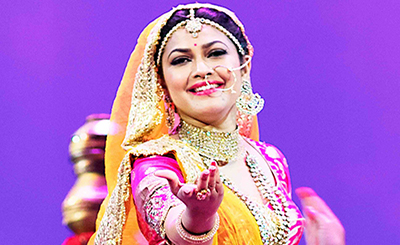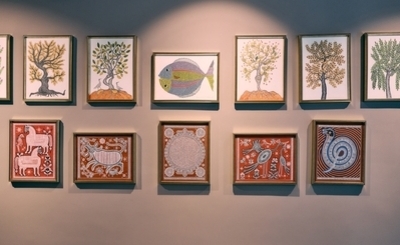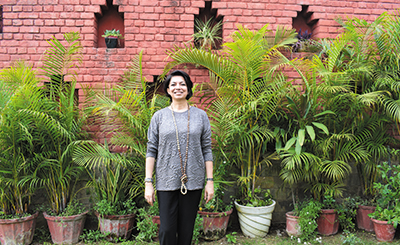
Saba Hasan at her residence-cum-studio in New Delhi. Photo: Shireen Quadri
Delhi-based artist Saba Hasan’s works wrestle with the forces of time, nature and personal histories. The artist talks to The Punch about her new show and her craft.
Saba Hasan, the Delhi-based artist, has developed a diverse multimedia repertoire — comprising installations, book sculptures, paintings, photographs, voice works and videos — over two decades of practice. Her abstract and conceptual works — using wide-ranging materials, like paint, burnt text, sound, books, sand, soot, nails, rope, cement, leaves, seaweed, shells and forest debris — often wrestle with the forces of time, nature and personal histories.
Over the years, Saba, 53, has found a distinct idiom and devised a unique vocabulary. As part of a series, she has tied up books, locked them away, fossilized, cut or burnt them. The idea of the series with books is to question what is considered to be the absolute truth and to explore the ethical and political dimensions of the notion of truth or haqeeqat as she calls it. Most of Saba’s works can be seen as acts of quiet subversion. They are also, at many levels, acts of open rebellion.
Saba’s walks in Hauz Khas park have also been an important preoccupation of her recent art practice. She has a large body of photographs that trace these walks and has also created a soundscape of her route which was aired at a sound festival via Osso Radio in Portugal. In this series, Saba aims to showcase how closely our lives are entwined with nature. A monograph on Saba’s works is being published by Barefoot Print and will be launched in India soon. The Punch met Saba Hasan at her residence-cum-studio at Safdarjung Enclave in New Delhi recently.
Excerpts from an interview:
THE PUNCH: Your latest show, “Undeciphered Fates”, held at the Art and Aesthetic gallery in New Delhi in February, brought together your book installations as well as voice and video works. These works are, of course, parts of the continuum of your experiments with different media.
SABA HASAN: There is a lot of variety in the media that I use. Videos, sound, voice pieces and photographs have become integral to my repertoire. I have gone beyond media experimentation and I am quite well settled in techniques and the process of actualisation. But in terms of how I work — the ideas I am exploring, the sense, tone, colour and sound that I want to bring out — it has definitely been a continuum.
“Undeciphered Fates” is the title of my poem or voice work, which is part of the show. I have been using text in my paintings and installations for many years. Originally in English, it found its way into Urdu, my mother tongue. I exhibited a series called “Letters from Baton Rouge,” which were letters written to me by my mother. I think that my mother’s voice and my voice are one. So, I did not hesitate to appropriate her writing. The decision to use Urdu, though I can’t write in it, was a conscious choice because it symbolises a markedly syncretic culture and carries a familiar sound to it. The burnt works, for which the 2002 Gujarat riots were also a trigger, began out of a deeply personal attempt to make sense of what was happening around me and portray it all as I interpreted it.
I have lived in several countries around the world. I grew up in Moscow and when I came back to India, I wasn’t even thinking of myself either as a girl or a Muslim, but as an Indian or rather a person. But I came across some hurtful prejudice in India, which is highly polarised communally and, of course, patriarchal. Most cities I lived in, like Moscow, Paris, Lausanne, New York, I felt accepted for who I was. Perhaps in these cities people are less divided. We Indians, though diverse, are extremely caste and community conscious, and inegalitarian. I find there is an intersectional overlap of oppression based on religion, caste, class and gender.
My works have been biased against for all these reasons, but especially because of the use of Urdu which is associated wrongly with Islam here and seen as un-indian, now even anti-national. You will find only very young or bold minds seeing past it.
Coming back to your question, all the works in different media clearly reflect my sensibility and I can confidently say I have found my own voice in art. My post conceptual style of abstraction, however, is extremely nuanced. It can get a tad complex, requiring sensitivity and intelligence, not suitable at times for quick response or comprehension. The heart of the matter, therefore, is not of finding a voice and being heard but of being understood.
THE PUNCH: As an artist, how important is the space you inhabit and the articulation of what you feel in the vocabulary you choose to express it in?
SABA HASAN: My engagement with expression has been richly coloured, right from the beginning when I was a child encountering different cultures as I travelled with my journalist parents to Europe and later as a student to the United States. There has also been a constant yearning to have a space of my own and wanting people to accept that space as I envision it. It has been a part of my nomadic life and, therefore, a part of my writing, a part of my ideation, my values and resulting art practice.
Today, I feel it is a space that I own, where I can express myself clearly, without hesitation but it’s a thickly layered landscape. One’s identity consists of so many aspects that expression cannot be very direct or literal, using words which already have a certain coded understanding between people is not good enough. Abstract art offers that possibility of expressing what really can’t be described with existing words. Expression is the key to visual imagery and who you are and the experiences you have gone through. Finally, they all determine the power of your art. Much like the artistic courage you need to make a video of a book that you burnt because you believe it conveys ideas beyond that single act. In my space, I present the world the way I think right. And you have to accept it. I am not going to explain it to you.
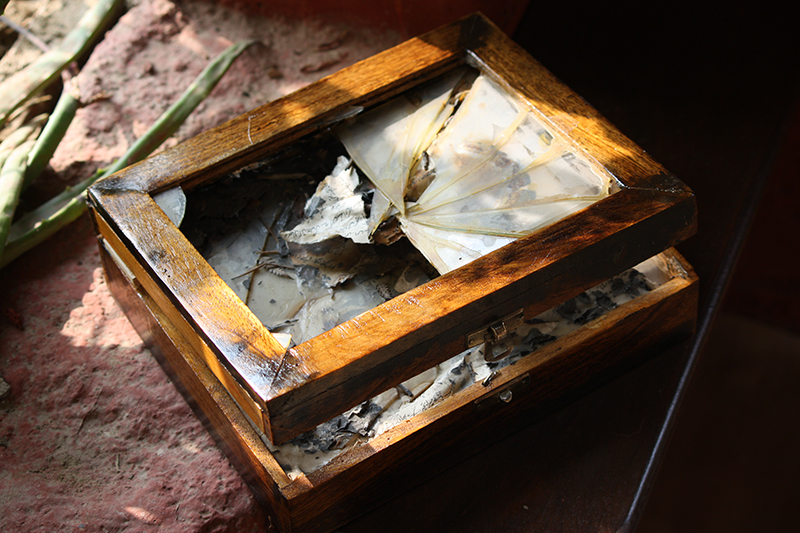
Book in a smashed box, mixed media
It’s tough because your audience is not always ready, especially in the art world. I find the art world here quite conservative as it’s very commercial and the overriding concern is whether the exhibit is going to sell or not, not the artistic merit of a work. My best feedback comes from my peers; an artist knows best what has gone into the work and what it means. Some of us are working around broader ideas and doing fleeting, but novel works. It’s okay that many who come to see them are not going to buy our art. One has to show the work not to sell it, but to reach out to a larger audience. For me, the art market is an impediment, not only because it might potentially restrict what I have to say, but also because it restricts my audience.
A photographer cousin who designed my monograph of book sculptures used the word “intimate” to highlight a point of commonality in my work. In the video, for example, I am searching for that moment of silence when you are alone and look into the mirror. And it’s the same with the voice installation which I perceive as a sound in your head. I keep it the way I would talk, if talking to one person. You can say things in so many ways and still be understood. That’s the beauty of this kind of intimate communication. With a small book fossil or just my voice installation, I have sometimes seen people transform.
Initially, when I started using the spoken word, I wanted to be spectacular, to carve out space and be heard. I was at a residency in Austria. The first thing that came to mind about the castle in which we were working was that it was a fortification, to keep outsiders from entering. So, I proposed to close the main gate barring entry to all visitors on the opening day of the exhibition. My plan was not to allow the people to enter the castle for a few minutes. This would raise questions in their minds: “I have a ticket then why am I not allowed in? Is it that I am black? Or white? Badly dressed? or that I am a woman?’ I would be putting them in an uncomfortable position, something that a minority is constantly made to feel under social regulations. My proposal got rejected as its execution seemed difficult to the organisers. This project failure led to my first voice work in 2010, “Rehearsal for a Poem” successfully installed at the giant gates of the Hohenburg Castle.
Page
Donate Now
More from Arts
Comments
*Comments will be moderated





